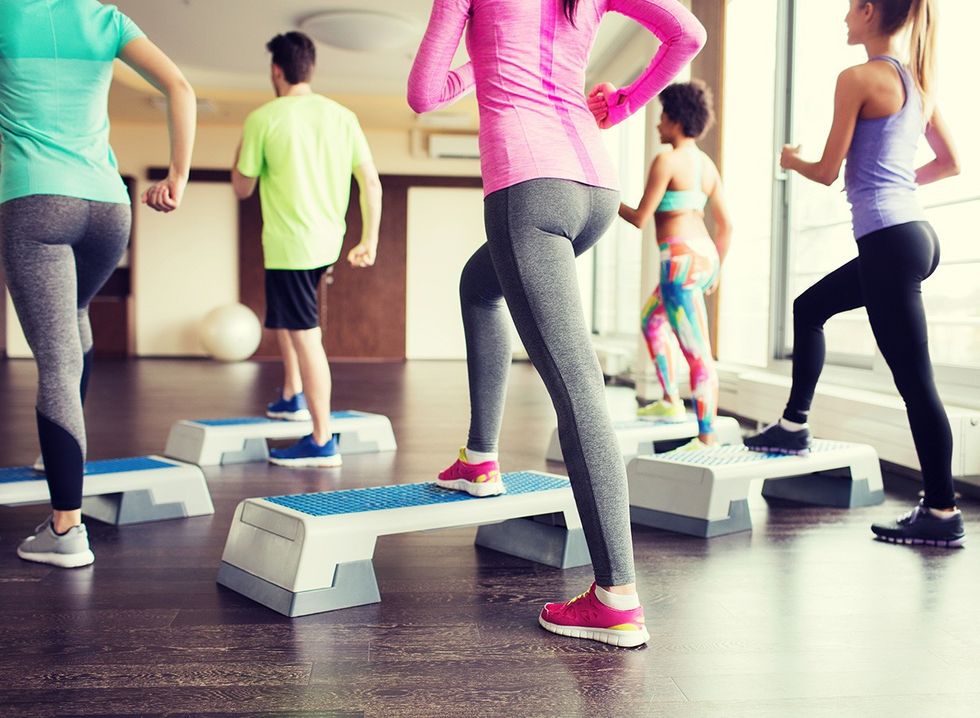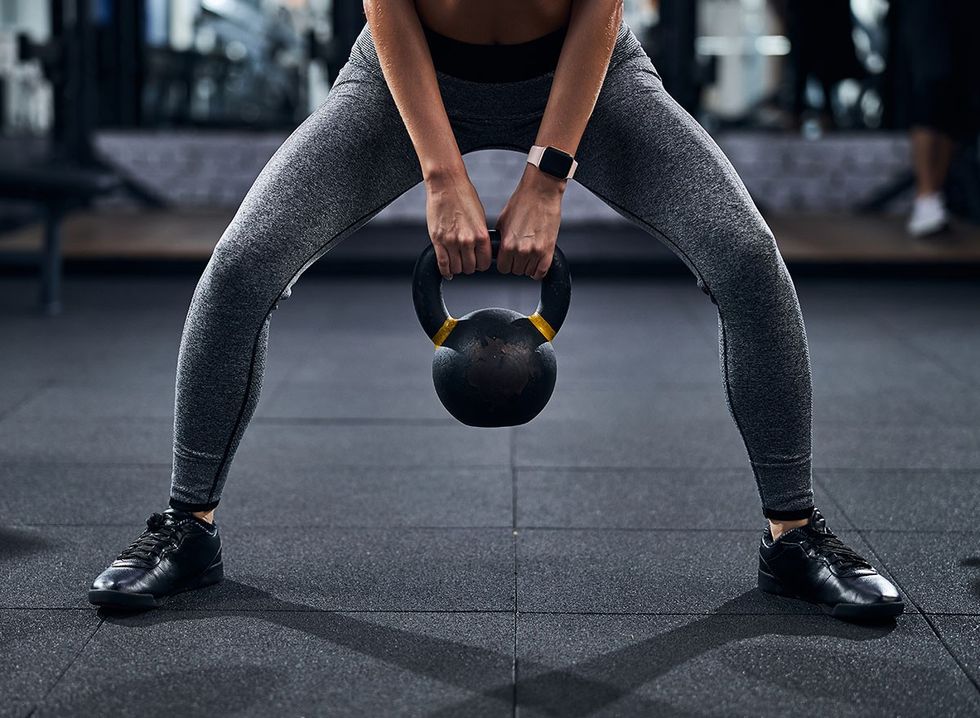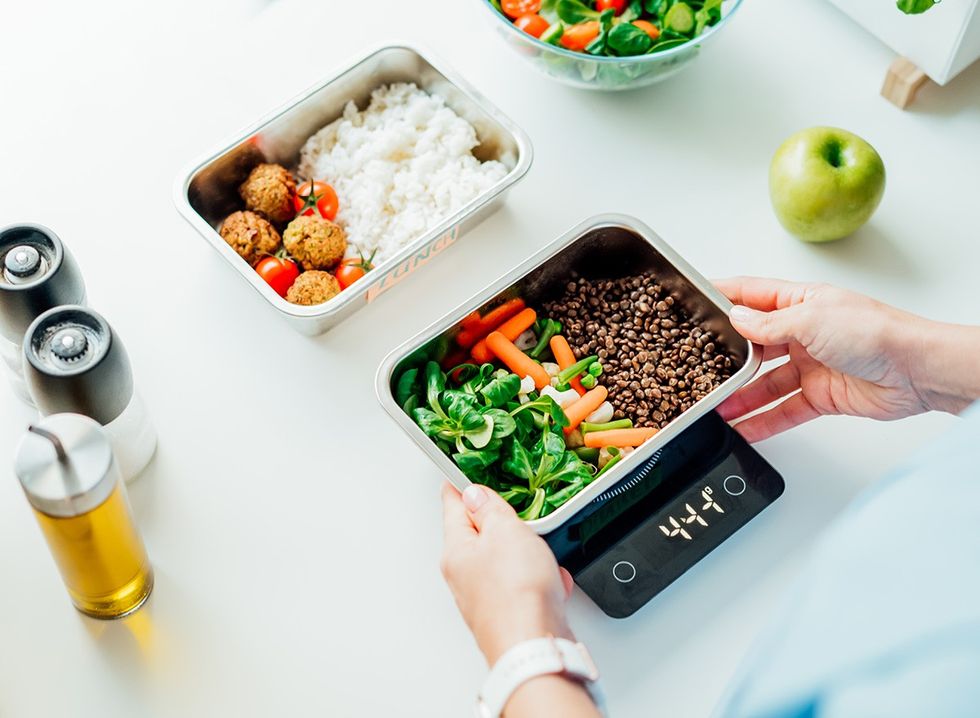Let's talk about the powerhouse we often overlook: our leg muscles. (As a a nationally board-certified and licensed athletic trainer who decided to apply my sports medicine skill set to the general public, I have been in the fitness industry for over 10 years, so know a thing or two about this.) Those leg muscles aren't just for show—they're essential for lifting, carrying, and keeping up with our little ones. Plus, here's a bonus: the bigger the muscles, the more calories and fat we burn. And let's not forget that working out the legs also means a natural testosterone boost. Plus, who wouldn't want to alleviate that annoying low back pain? So, let's discuss how to make sure our legs are getting the attention they deserve!
1. Your Leg Muscles are Among the Most Powerful in Your Body

When we discuss building powerful legs, it’s essential to understand the concept of power itself. Power is the ability to create force at a fast rate, which can be calculated as force multiplied by acceleration. To achieve this, it's important to train like an athlete, focusing on a comprehensive approach that involves various muscle groups and movements. The lower body alone consists of 15-20 major muscles, and when considering the feet and ankles, this count rises to around 40.
I always encourage my clients to learn the anatomy of their body. Once you understand the complexity of our muscular system, how it interacts with the joints and skeletal system, it becomes much easier to manipulate and grow those muscles in a desirable manner. A very easy example is the “calves” muscle group. Most people are entirely unaware that your calves actually have three muscles, the gastrocnemius is the most superficial, invisible muscle, the soleus, which is a deeper and flatter muscle that is isolated by having your knees bent and the plantaría which is very small and deep, as well. Therefore, if you only train the calves with your legs, straight or only with your knees bent in a seated position, then you are neglecting the other major calf muscle, and therefore, probably putting yourself at risk for tearing your Achilles tendon which connects both of those muscles to your calcaneus foot bone.
Related: 10 Ways to Eat for Abs
2. Know the Key Muscle Groups in Your Legs

The key muscle groups and movements involved in building powerful leg muscles include ankle plantarflexion (involving the calves), ankle dorsiflexion (Tibialis anterior), knee extension (quadriceps), knee flexion (hamstrings), hip flexion (hip flexors and quadriceps), hip extension (glutes and hamstrings), hip adduction (adductor group and hip flexors), and hip abduction (glutes and deep abductor group). To effectively target these muscle groups, it's recommended to aim for 20-25 sets per muscle group per week, incorporating compound exercises like squats, deadlifts, and lunges but also more isolated movements for the adductor and abductor groups, hip and knee extensors and flexors, as well as various forms of calf raises, like mentioned above.
3. Move Like an Athlete

In addition to a comprehensive strength training regimen, it's crucial to integrate locomotive and athletic movements into your workout routine. This is where we move and feel like an athlete! Where the rubber meets the road, expressing that strength at a fast rate. This includes exercises such as walking lunges, sprints, skater hops, step ups, split squat jumps, box jumps, depth jumps, squat jumps, sled pushes, sled pulls, resisted running, and shuffling. When considering rep ranges, it's advisable to focus on 4-6 reps for power movements and 6-12 reps for general strength and hypertrophy movements.
The last two analogies I like to make people aware of are when we usually get hurt.
- When we land. Athlete’s always get hurt when they are landing, not jumping and when they are planting a foot to change direction. The problem with both scenarios is the gas being stronger than the brakes. Train your brakes!
- When we over stretch a muscle or ligament and it can no longer manage the tension at that length. The biggest example, like I mentioned before, is the Achilles tendon. It gets outstretched, and the muscle is not strong enough in the awakened position and it tears. Train your muscles intelligently at their most vulnerable positions.
Related: How I Shed 99 Pounds Naturally With These 4 Changes
4. 13 Secrets to Building Powerful Leg Muscles

- Train like an athlete to develop strength, power and speed.
- Consistency! Build a foundation of strength to support muscle development
- Target all major leg muscle groups through a variety of exercises and balance them out in your phases of training
- Workout lower body 2x per week and aim for 15-20 sets per muscle group per week for optimal development
- Day 1: One major lift (squat or deadlift) and accessory machine or band and cable isolations into
- Day 2: The other major lift integrated with locomotive and athletic movements to enhance coordination and performance
- Focus on a rep range of 4-6 for power movements and 6-12 for general strength and hypertrophy movements.
- Devote time and energy to appropriate recovery to aid muscle growth and repair (sleep, ice baths, saunas, compression boots, etc.)
- Reduce inflammation and muscle soreness through soft tissue work using a foam roller and/or a professional bodywork specialist, like myself.
- Consume roughly 1g of protein per pound of your ideal body weight and avoid processed and inflammatory foods to support muscle recovery and growth.
- Be mindful of overtraining and avoid doing excessive power exercises, focusing on balanced training across all muscle groups and movements.
- Apply progressive overload gradually to support muscle growth, and avoid plateaus.
- Make it fun and get comfortable being uncomfortable.
Related: Top 10 Muscle-Driven States in America
5. Avoid These Common Mistakes

To achieve powerful leg muscles, it's important to avoid common mistakes that may hinder progress. This includes focusing solely on speed without addressing other aspects of power, being mindful of the impact of repetitive movements on joints, training across all planes of motion, and avoiding applying progressive overload too rapidly, which can lead to injury.
By incorporating these 13 secrets into your leg muscle-building journey, you can develop strength, power, and agility, ultimately achieving the powerful and good looking legs you desire.
Dillan Foss is a Board Certified and Licensed Athletic Trainer, and the founder of Limitless Theory, a wellness concierge business rooted in the integrative benefits of sports medicine and dietary and lifestyle interventions.















 Shutterstock
Shutterstock Shutterstock
Shutterstock Shutterstock
Shutterstock Shutterstock
Shutterstock Shutterstock
Shutterstock Shutterstock
Shutterstock Shutterstock
Shutterstock Shutterstock
Shutterstock Shutterstock
Shutterstock Shutterstock
Shutterstock Shutterstock
Shutterstock




 Shutterstock
Shutterstock Shutterstock
Shutterstock Shutterstock
Shutterstock Shutterstock
Shutterstock Shutterstock
Shutterstock gainsbybrains/Instagram
gainsbybrains/Instagram
 em_fitx/TikTok
em_fitx/TikTok em_fitx/TikTok
em_fitx/TikTok em_fitx/TikTok
em_fitx/TikTok em_fitx/TikTok
em_fitx/TikTok em_fitx/TikTok
em_fitx/TikTok em_fitx/TikTok
em_fitx/TikTok em_fitx/TikTok
em_fitx/TikTok

 I'm a Nutritionist and These 9 High-Protein Snacks Keep My Clients Full While Losing 50 Pounds
I'm a Nutritionist and These 9 High-Protein Snacks Keep My Clients Full While Losing 50 Pounds
 Shutterstock
Shutterstock 2. Processed FoodsShutterstock
2. Processed FoodsShutterstock Shutterstock
Shutterstock Shutterstock/Prostock-studio
Shutterstock/Prostock-studio Shutterstock
Shutterstock Pro TipsShutterstock
Pro TipsShutterstock Shutterstock
Shutterstock Shutterstock
Shutterstock Shutterstock
Shutterstock Shutterstock
Shutterstock Don’t Drink as Much AlcoholShutterstock
Don’t Drink as Much AlcoholShutterstock Most Women on GLP-1s Are Making a Few Common MistakesShutterstock
Most Women on GLP-1s Are Making a Few Common MistakesShutterstock Soda and Sugary DrinksShutterstock
Soda and Sugary DrinksShutterstock Shutterstock
Shutterstock Eat BreakfastShutterstock
Eat BreakfastShutterstock And Improve Insulin SensitivityShutterstock
And Improve Insulin SensitivityShutterstock Belly Flab Strip Tip: Sugar and Fat Calories Leave Its Mark on Your BodyShutterstock
Belly Flab Strip Tip: Sugar and Fat Calories Leave Its Mark on Your BodyShutterstock Shutterstock
Shutterstock The Drugs Mimic the GLP-1 Hormone Naturally Produced by the BodyShutterstock
The Drugs Mimic the GLP-1 Hormone Naturally Produced by the BodyShutterstock 3. Deep-Fried ItemsShutterstock
3. Deep-Fried ItemsShutterstock